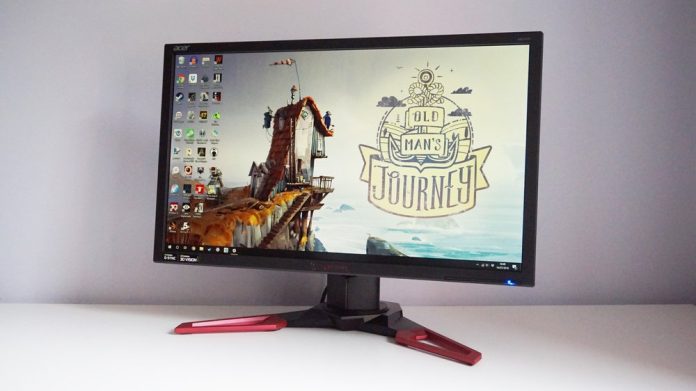When it comes to streaming, having a high-quality monitor is essential for an immersive and enjoyable experience. The right monitor can significantly enhance the visual aspects of your stream and provide you with the necessary tools for smooth gameplay. In this article, we will explore the best monitors for streaming and delve into the comparison between 32-inch vs 27-inch displays, two popular options among streamers.
Selecting the ideal monitor for streaming is crucial for content creators, gamers, and professionals alike. The display size plays a significant role in enhancing the streaming experience, with 32-inch and 27-inch monitors being popular choices. In this article, we will explore the benefits and considerations of each size to help you make an informed decision.
-
Importance of Choosing the Right Monitor for Streaming
Streaming requires a monitor that can accurately display colors, provide fast response times, and offer a smooth refresh rate. These features ensure that your viewers receive the best visual experience and that you have a competitive edge during gameplay. By investing in a suitable monitor, you can elevate the quality of your streams and attract a larger audience.
-
Exploring the Benefits of a 32-inch Monitor
A 32-inch monitor offers several advantages for streamers:
Enhanced Immersion: The larger screen size creates a more immersive environment, drawing viewers into the action.
Increased Visibility: A bigger display allows you to see finer details, such as text and graphics, with greater clarity.
Multitasking Potential: With a 32-inch monitor, you have ample screen real estate for multitasking, such as monitoring chat, keeping track of stream overlays, or managing additional applications.
Consider the nature of your streaming activities and the amount of content you need to display simultaneously. If you require expansive multitasking capabilities or detailed content reproduction, a 32-inch monitor may be the better choice. However, if you have limited desk space or prefer a more compact setup, a 27-inch monitor might be the optimal option.
-
The Advantages of a 27-inch Monitor
While a 32-inch monitor provides numerous benefits, a 27-inch display also has its advantages:
Sharper Image Quality: With a higher pixel density, a 27-inch monitor can deliver crisper visuals, making it ideal for games with intricate graphics.
Easier Viewing Experience: A slightly smaller screen size often means less eye movement, resulting in a more comfortable viewing experience, especially during fast-paced gaming sessions.
Space Efficiency: If you have limited desk space or prefer a more compact setup, a 27-inch monitor offers a balance between screen real estate and physical footprint.
-
Factors to Consider When Choosing Between 32-inch and 27-inch Displays
To determine the best monitor size for your streaming needs, consider the following factors:
Desk Space: Assess the physical dimensions of your workspace and determine whether a larger or smaller monitor would fit better.
Viewing Distance: Consider the distance between your eyes and the monitor. If you sit closer, a 27-inch display may be more suitable, while a 32-inch monitor might be optimal for those who prefer sitting farther away.
Screen Resolution: Both 32-inch and 27-inch monitors are available in various resolutions, such as Full HD (1920×1080), Quad HD (2560×1440), or 4K Ultra HD (3840×2160). Higher resolutions on a smaller screen can offer crisper details.
Both 32-inch and 27-inch monitors are available in various resolutions, such as 1080p (Full HD), 1440p (QHD), and 4K (UHD). Higher resolutions on larger screens provide enhanced clarity and sharpness, but keep in mind that your system’s hardware must support the desired resolution for optimal performance.
-
Transitioning Between Monitors: Scaling and Aspect Ratios
When transitioning from a smaller to a larger monitor or vice versa, you may need to consider scaling and aspect ratios. Adjusting scaling settings ensures that the content on your screen is appropriately sized, preventing any distortion or loss of visual quality. Additionally, be aware of the aspect ratio differences between monitors to maintain consistency in your streams.
The viewing distance is crucial for a comfortable streaming experience. If you typically sit close to the monitor, a 27-inch display might be more suitable, as it requires less eye movement and reduces the risk of eye strain. However, if you prefer a more immersive experience or sit at a further distance, a 32-inch monitor can provide a larger field of view.
Conclusion
Selecting the best monitor for streaming involves careful consideration of your specific needs and preferences. While a 32-inch monitor offers enhanced immersion and multitasking capabilities, a 27-inch display provides sharper image quality and space efficiency. Assess your desk space, viewing distance, and desired screen resolution to make an informed decision. Ultimately, choosing the right monitor will enhance the quality of your streams and contribute to a more enjoyable streaming experience.
Choosing the best monitor for streaming involves considering various factors, such as screen size, resolution, and personal preferences. While 32-inch monitors offer a more immersive and detailed experience, 27-inch monitors strike a balance between size and pixel density. Assess your specific needs, workspace limitations, and viewing preferences to determine which size is the right fit for your streaming setup. Remember to consider factors like resolution, pixel density, and viewing distance to ensure a comfortable and enjoyable streaming experience.





